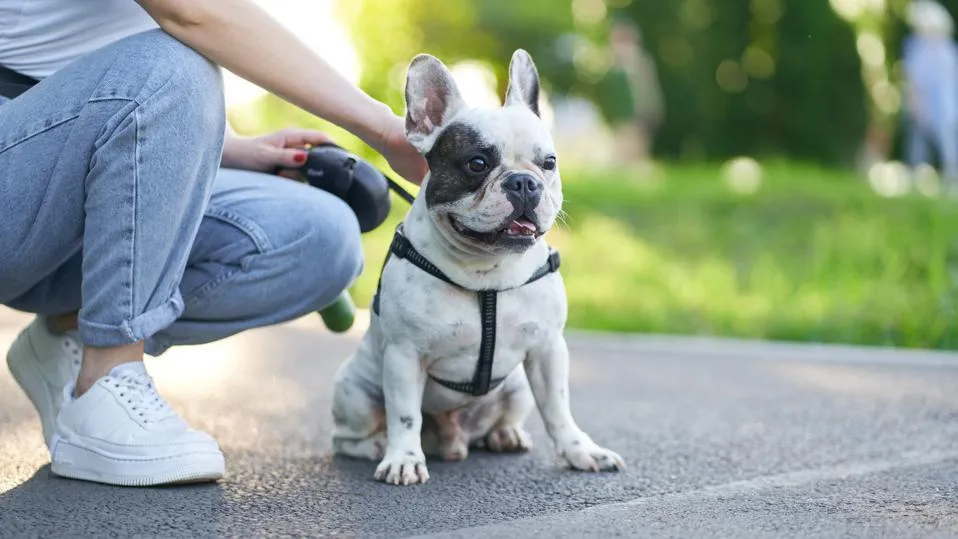The Dalmatian is a breed that captures the imagination with its distinctive spotted coat and noble bearing.
These dogs have a fascianting history as companions to horse-drawn carriages and firehouses.
But there’s much more to these spotted beauties than meets the eye.
Whether you’re considering adding a Dalmatian to your family or just curious about this iconic breed, let’s dive into what makes Dalmatians so special.
The Dalmatian’s Storied Past
Dalmatians have a rich heritage that spans centuries. These elegant dogs originated in Croatia’s Dalmatia region, hence their name.
But their exact origins remain somewhat of a mystery.

From Carriage Dog to Firehouse Mascot
One of the Dalmatian’s most intriguing roles was that of a “coach dog.” These spotted companions would trot alongside horse-drawn carriages, adding a touch of prestige to the journey.
Their endurance and affinity for horses made them perfect for this job.
As I’ve researched, Dalmatians formed a special bond with horses. They would keep the animals calm during travel and guard the carriage when it was parked.
This natural affinity led to their next famous role – as firehouse dogs.
When fire engines were horse-drawn, Dalmatians would:
- Clear the way for approaching fire wagons
- Keep horses calm amidst the chaos of a fire
- Guard the firehouse and equipment
Even after motorized fire trucks replaced horse-drawn engines, Dalmatians remained beloved firehouse mascots. This tradition continues in many firehouses today.
The Distinctive Dalmatian Look
Perhaps the most recognizable feature of Dalmatians is their spotted coat.
But did you know Dalmatian puppies are born completely white? The spots begin to appear when they’re about 2 weeks old.
Coat and Colors
The classic Dalmatian coat features:
- A white base coat
- Distictive black or liver (brown) spots
- Spots that are well-defined and evenly distributed
While black and white is the most common coloration, liver and white Dalmatians also exist.
Some rare Dalmatians may even have lemon, blue, or tri-colored spots.

Physical Characteristics
Beyond their spots, Dalmatians have a distinctive build:
- Medium-sized, muscular body
- Deep chest and strong legs built for endurance
- Short, dense coat that sheds year-round
- Floppy ears and long tail
An average Dalmatian stands 19-24 inches tall and weighs between 45-70 pounds. Females tend to be slightly smaller than males.
Dalmatian Temperament: Energetic and Devoted
Dalmatians are known for their lively personalities and devoted nature.
These dogs form strong bonds with their families and thrive on human companionship.
Key Personality Traits
- Intelligent and trainable
- Energetic and playful
- Alert and protective
- Sometimes stubborn or sensitive
In my experience working with Dalmatians, they’re incredibly loyal dogs.
One Dalmatian I knew would follow his owner from room to room, always wanting to be nearby.

Exercise Needs
Dalmatians have high energy levels and require plenty of exercise.
Without adequate physical and mental stimulation, they can become bored and destructive.
Daily exercise recommendations:
- At least 1-2 hours of activity
- Long walks or jogs
- Playtime in a fenced yard
- Agility or obedience training
I once dog-sat a Dalmatian who needed two long walks and an hour of fetch every day to stay happy. These dogs are true athletes!
Training and Socialization
Early training and socialization are crucial for Dalmatians.
Their intelligence makes them quick learners, but their independent streak can sometimes lead to stubbornness.

Training Tips
- Start training early and be consistent
- Use positive reinforcement techniques
- Keep training sessions short and fun
- Provide mental stimulation through puzzle toys and games
Socialization is equally important. Expose your Dalmatian puppy to various people, animals, and situations to help them develop into well-rounded adults.
Health Considerations
Like all breeds, Dalmatians have some health issues to be aware of:
- Deafness: About 30% of Dalmatians are born deaf in one or both ears.
- Urinary stones: Dalmatians have a unique urinary system that can lead to stone formation.
- Hip dysplasia: A genetic condition affecting the hip joint.
- Skin allergies: Some Dalmatians are prone to skin sensitivities.
Regular vet check-ups and a proper diet can help manage these potential health issues.

Is a Dalmatian Right for You?
Dalmatians can make wonderful companions for the right families.
They’re best suited for active households that can provide plenty of exercise and attention.
Consider a Dalmatian if you:
- Have an active lifestyle
- Can commit to daily exercise
- Have time for training and socialization
- Don’t mind some shedding
However, Dalmatians might not be the best fit if you:
- Live in a small apartment
- Are away from home for long periods
- Want a low-energy lap dog
Caring for Your Dalmatian
If you decide to bring a Dalmatian into your life, here are some care tips:
- Provide plenty of exercise and mental stimulation
- Brush their coat weekly to manage shedding
- Feed a high-quality diet appropriate for their age and activity level
- Schedule regular vet check-ups, including hearing tests
- Continue training and socialization throughout their life

Remember, a well-cared-for Dalmatian can be a loyal, loving companion for 10-13 years or more.
Dalmatians are truly unique dogs with a fascinating history and captivating appearance.
Their energy and devotion make them wonderful companions for active families.
While they require dedication in terms of exercise and training, the rewards of owning a Dalmatian are immeasurable.
Have you ever met a Dalmatian? Share your experiences or questions in the comments below!
And if you’re considering adding one of these spotted beauties to your family, be sure to do your research and find a reputable breeder or rescue organization.
Breed information
| Characteristic | Information |
|---|---|
| Breed Name | Dalmatian |
| Origin | Croatia (region of Dalmatia) |
| Group | Non-Sporting Group (AKC) |
| Height | Males: 22-24 inches (56-61 cm); Females: 20-22 inches (51-56 cm) |
| Weight | Males: 45-70 pounds (20-32 kg); Females: 35-55 pounds (16-25 kg) |
| Coat | Short, dense, and smooth |
| Colors | White with black or liver (brown) spots |
| Lifespan | 11-13 years |
| Temperament | Friendly, outgoing, energetic, and intelligent; known for their loyalty and playful nature |
| Energy Level | High; needs regular physical and mental stimulation to stay happy and healthy |
| Exercise Needs | High; requires daily exercise, including long walks, runs, or playtime to expend energy |
| Trainability | Intelligent and eager to learn but can be stubborn; requires consistent, positive reinforcement training |
| Intelligence | Very intelligent; capable of learning complex commands and tasks |
| Good with Children | Generally good with children; playful and energetic, but may be too exuberant for very young children |
| Good with Other Pets | Can get along well with other dogs and pets, especially if socialized early |
| Shedding | High shedding; regular brushing is necessary to manage loose hair |
| Grooming Needs | Low grooming needs; regular brushing and occasional bathing are sufficient |
| Barking Level | Moderate; will bark to alert or out of excitement |
| Space Requirements | Best suited for homes with a yard or access to outdoor space; can adapt to apartment living if sufficiently exercised |
| Socialization | Requires early and consistent socialization to ensure friendly and well-rounded behavior |
| Health Issues | Prone to deafness, hip dysplasia, urinary stones, and skin allergies |
| Diet | Requires a balanced, low-purine diet due to their susceptibility to urinary stones; proper hydration is essential |
| Affection Level | Very affectionate; forms strong bonds with family members and enjoys spending time with them |
| History | Known for their role as carriage dogs, guarding horses and coaches; their history dates back to ancient times, though they gained fame in the 1800s |
| AKC Recognition | Recognized by the American Kennel Club in 1888 |
| Ideal Living Conditions | Best suited for active families with access to outdoor space; requires regular physical activity and enjoys outdoor time |
| Notable Characteristics | Known for their distinctive spotted coat and their history as firehouse mascots and carriage dogs |
| Best Activities | Enjoys running, hiking, playing fetch, and participating in canine sports such as agility, obedience, and road trials |
| Suitability for First-Time Owners | Suitable for first-time owners if they are prepared for their high energy and exercise needs |
| Protective Nature | Protective but not aggressive; makes a good watchdog due to their alertness and loyalty |
| Playfulness | Very playful; enjoys interactive games, especially with family members |
Sources:
- American Kennel Club (AKC): Dalmatian Information
- DogTime: Dalmatian Breed Information
- The Kennel Club: Dalmatian Breed Standard
















